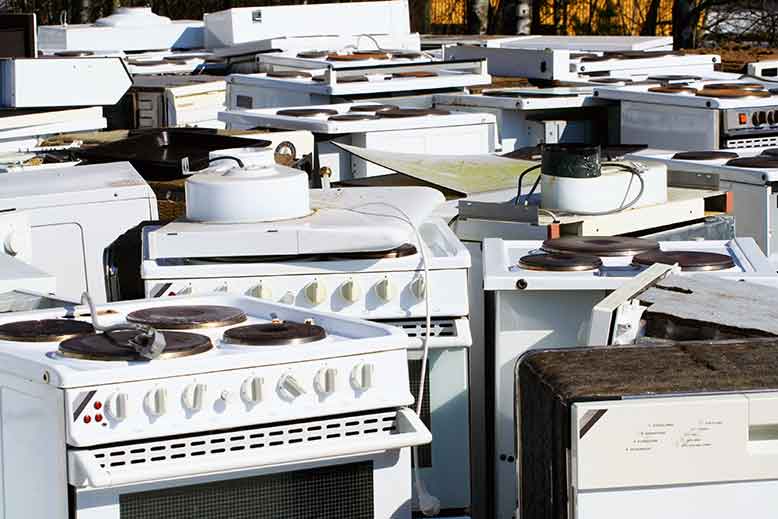

MAY 28, 2025
Recycling old appliances is a great way to reduce waste and earn money from the scrap metal inside. However, dismantling these machines and extracting usable metal parts should be done with caution. If you're planning to remove metal from old appliances, there are certain steps you can follow to do it safely and efficiently.
In today’s blog post, RCM Recycling explains how to safely remove metal from old appliances. As a trusted scrap metal recycling company, we are committed to making the process of recycling scrap metal hassle-free. The information in this article will help you make the most out of your unwanted appliances by safely extracting valuable metal components.
Before beginning, identify the appliance and understand its components. Common appliances like refrigerators, washing machines, dryers, and ovens contain valuable metals such as aluminum, copper, and steel. Compressors and motors inside these machines hold the most value. It’s a good idea to do some quick research on your specific appliance to understand which parts are worth salvaging.
You’ll need basic hand tools such as screwdrivers, wrenches, pliers, and wire cutters to dismantle certain appliances. For some appliances, you may need power tools like a reciprocating saw or drill. Just as important is your personal protective equipment. Wear gloves to avoid sharp metal edges, safety goggles to protect your eyes from flying debris, and long sleeves or workwear to prevent cuts and scrapes.
Never attempt to dismantle an appliance that’s still connected to power. Always unplug it first and, in the case of appliances like washing machines, drain any water. For refrigerators or air conditioners, special care must be taken because they contain refrigerants. These chemicals must be properly evacuated by a technician before any dismantling begins.
Start by removing plastic panels, rubber tubing, glass parts, and other non-metal pieces. This will expose the metal components and make the job easier. Keep screws and small parts organized if you plan to reuse or sell components.
Once the appliance is opened up, look for metal parts such as the motor, wiring, metal casing, and tubing. Use wire cutters to separate copper wires and remove any brackets or fasteners holding metal parts in place. Motors are often heavy and may require two people to safely lift them out.
After you’ve extracted the metals, sort them by type—copper, aluminum, steel, and brass. Clean materials and keep them separate to get the best value at the scrap yard. Remove any plastic or rubber from wiring to increase its value.
Not all components of old appliances are recyclable. Be sure to dispose of non-metal parts, hazardous materials, and electronic waste according to local regulations. Many communities have designated e-waste or appliance recycling centers for safe disposal. A simple Google search can help you find a local company that handles e-waste.
RCM Recycling is the company to call when you’re looking for professional scrap metal buyers. We offer fair prices for a wide range of scrap metal, including copper, aluminum, brass, stainless steel, and iron. Whether you're clearing out old appliances, construction debris, or industrial scrap, our team is committed to providing fast service, accurate weight assessments, and honest payouts. With years of industry experience and a strong focus on sustainability, RCM Recycling ensures your materials are processed responsibly. Contact us today for more information.